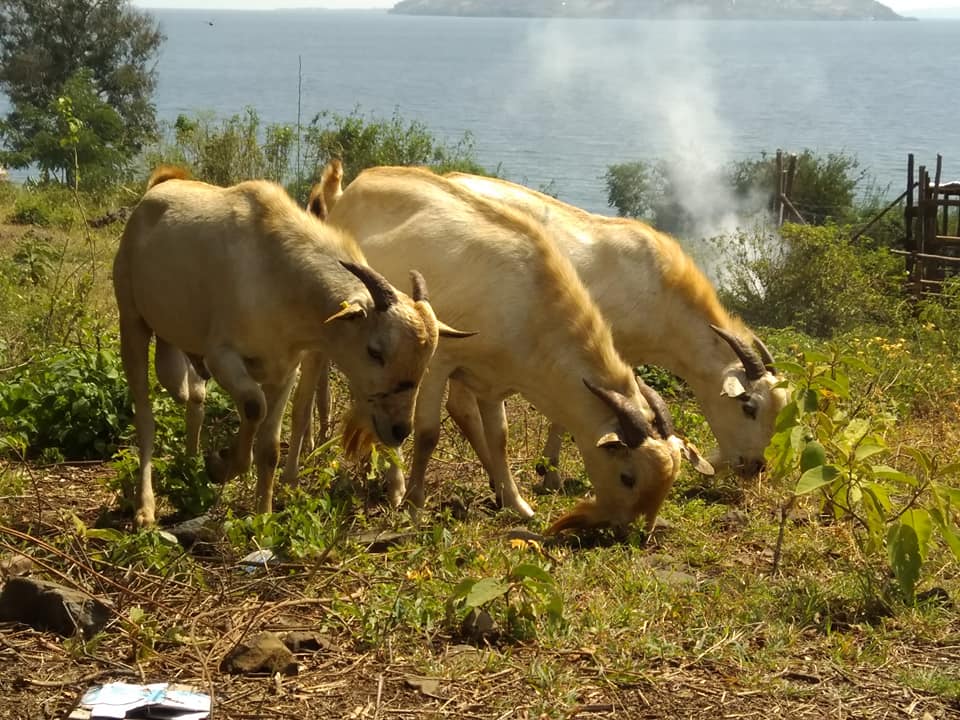Galla goats can grow up to six feet long and they are hardy and productive. Photo, East Africa Galla Goat Breeders Association.
Some three farmers from Nyando in Western Kenya in 2015 ditched traditional goats rearing for galla goats breed that mature into adults and attain market weight at around six months, half-a-year sooner than the local breeds hence they preferable for quick cash.
Edward Ouko, Daniel Langat and Stephen Matinde were introduced to the new breed of goat by scientists at the CGIAR, a global agricultural research partnership to improve food security and livelihood of farmers in the region which in the past years had been faced with yearly famine.
In 2010–2011, a survey of 139 households found that 81 per cent suffered up to two “hunger months” a year, with families eating just one or even no meals a day.
However, the goats, along with other climate-smart farming activities, have brought more food to the table in Nyando households.
“These goats mature faster to attain up to 70kg and that is why they fetch three times the price of local breeds at the market,” said Ouko.
RELATED STORY: Fact sheet on Boer goat breed
A mature female Galla goat weighs between 45 and 55kg while the male one’s weight can go up to 60-70kg as compared to adult sea goat male goat which weighs between 30 and 40kg while a female weighs from 25 to 30kg.
“I can now comfortably pay school fees for my children from the sale of the goats and still use the rest of the money to cater for my family needs,” said Langat.
On the other hand, the Galla or Somali goat, a native of Northern Eastern Kenya, is a good producer of milk and does well mainly in arid areas. It has a bigger body and produces at least two litres of milk a day.
RELATED STORY: How to control deadly goat disease
Characteristics and adaptation

Grazing galla goats. Photo, East Africa Galla Goat Breeders Association.
Pure Galla goats are docile and the hardiest small stock breeds on earth making it adaptable in great variety of pasture and climatic conditions.
The animal is an excellent walker, has sturdy legs and moves easily in rugged mountainous areas and through dense bush.
During drought conditions, the breed probably survives longer than most other animals without supplementary feeding or feed.
The goats adapt well to hot environments because of their small size and higher ratio of body surface area to body weight.
Also, their ability to conserve body water, their limited subcutaneous fat cover, and their hairy coats are good survival traits under a wide variety of climatic conditions.
RELATED STORY: Rearing five dairy goats is 45 per cent more profitable than a dairy cow
Market
The meat of galla goats is flavoursome, succulent, tender, extremely attractive and very tasty. Currently, the meat is much sought after for barbecue and spit roasting purposes.
For this reason, goats should be marketed between the ages of 6 and 15 months when they can fetch between Sh30,000 and Sh50,000 each depending on the sex.
RELATED STORY: Government launches Sh6.2bn plan to save farmers from a viral sheep and goat disease